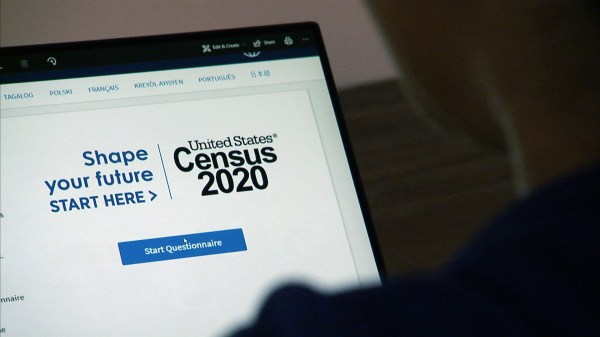The Census Bureau is planning to use new, high-tech methods for collecting data from respondents on the ground during the 2020 census.
Even though the next census is almost six years away, the bureau opened a field office in Silver Spring, Maryland, earlier this month to begin field testing new technologies and methodologies.
According to Frank Vitrano, the associate director for the 2020 census, the bureau is looking into “bring your own device” technology to help census enumerators gather and categorize data during the door-knocking stage of the census. The first tests involve the use of BYOD-compatible mobile application technology.
In this situation, an enumerator would access a mobile application built in what Evan Moffett, the 2020 census IT Portfolio Manager, referred to as a secure container, which ensures the applications meet the federal government’s secure configuration requirements.
BYOD technology is not the only way the bureau is attempting to streamline census information gathering. The Internet will take over in 2020 as the primary means of gathering census information from individuals.
Traditionally, the U.S. Postal Service has played a central role in census information gathering. This time around, the census is attempting to cut costs and time by inviting individuals to fill out their census information online, which will also allow them to sign up for upcoming census notifications either by email or text message.
“Some people might prefer to receive a text message or an email saying it’s time to go online without seeing a card we mail them,” Vitrano said.
By reengineering how the Census staff interacts with respondents and how the bureau works in the field, the ultimate goal of a cost-effective census gets closer to reality, Vitrano said.
“We’ve set a goal for ourselves to conduct a census in 2020 that costs less than the 2010 census when considering cost per case,” Vitrano said. “The population is growing, so the census gets more expensive, but we’re trying to make it relatively less expensive.”
The Silver Spring test cycle will survey approximately 200,000 households in the Washington, D.C., area. To start, the bureau will mail a card with information directing an individual online to sign up for email or text message notifications alerting them it is time to fill out their census information.
If someone does not respond online, they will be mailed the traditional census questionnaire. If they do not respond to the questionnaire, in mid-August or September, census enumerators will knock on doors to attempt to gather the data.
This process is similar to how a traditional census would work, but on a more concentrated scale, Vitrano said.
Since the announcement of the Silver Spring office in early June, the bureau has begun the process of hiring close to 1,000 people to get the work done, both as census enumerators and data processors.
The actual data and information gathered during this initial field test will not actually be used in the census, but rather as a way to examine the new collection methodologies and technologies.
“As a matter of fact, the methodologies we’re using – we would never certify a count of the area based on the results, because there’s a lot of things that we would do in a true census environment that we’re just not doing here,” Vitrano said. “In some cases, honestly, we would tell staff that it’s okay, in some of these instances, to fail a little bit, because that’s part of how you learn.”
Major decisions on processes will be made by the end of fiscal year 2015, Vitrano said. After that, the bureau will devote most of its time to development of the final systems the 2020 census will employ. The remaining time will be spent on testing, in lead-up to the actual census.






